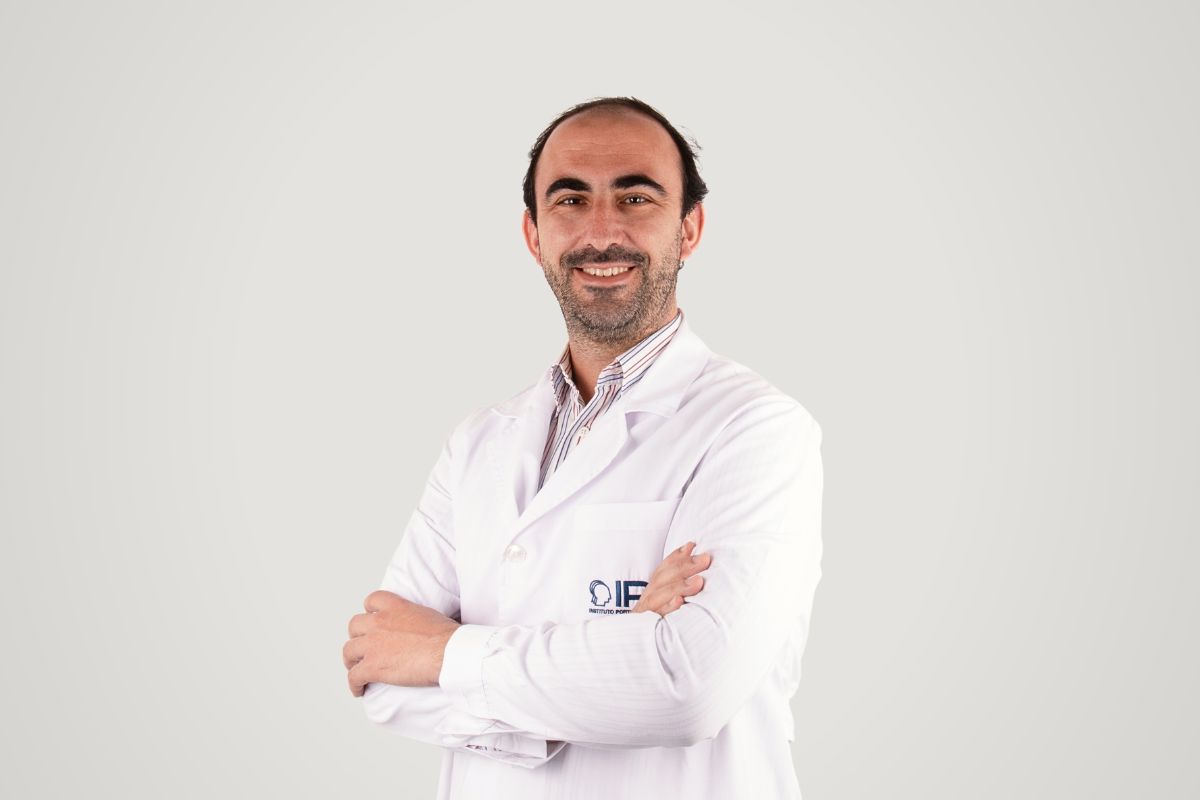FACIAL PLASTIC SURGERY
FACIAL PLASTICS DEPARTMENT
At IPFace we aim to enhance the self-esteem of our patients, by offering an innovative range of rejuvenating treatments to make you feel comfortable and confident!
The Facial Plastics Department offers treatments that will restore your self-confidence, such as blepharoplasty, facelift, otoplasty, rhinoplasty and bichectomy.
Talk to us to find out more.
FACIAL PLASTIC TREATMENTS
Frontoplasty
What is the procedure?
It involves reducing the hairline or advancing the scalp or reducing the bones of the forehead through a surgical technique that softens the difference in size.
Clinical Manifestation
This surgery is recommended for those with a large forehead in relation to the rest of the face, excessive frontal bump, very prominent eye landmarks, or hair implantation very far back or loss of hair over time due to internal or external hormonal stimuli, all of which directly affect female aesthetics.
The reduction of the hairline or advancement of the scalp or reduction of the forehead bones can be performed through a surgical technique that softens this size difference. This intervention is primarily performed on cis or trans women, knowing that one of the attractive points in women is located 5-6 cm above the midline of the eyebrows, with a softened frontal bump at the level of the nose root and a more open eye landmark. African, Chinese, and Anglo-Saxon women show a higher prevalence of an elongated forehead.
For the greater comfort of the patient, this technique is performed under general anesthesia, with the patient being discharged on the same day. The skin incisions follow the orientation of the hair follicles to emphasize a natural appearance, and in some cases, this technique may be complemented with hair transplantation.
With the technological development of virtual planning and ultrasonic surgery, recovery is quick, normalizing life within 15 days to 3 weeks.
BLEPHAROPLASTY
Blepharoplasty is the name of the surgery performed to improve the appearance and/or function of the eyelids, enabling rejuvenation of the area around the eyes.
Surgery can be directed at the upper eyelid (upper blepharoplasty), the lower eyelid (lower blepharoplasty) or both.
The aging of the upper eyelid causes excess skin that alters the normal contour of the eyelid and which can interfere with the field of vision.
In the case of the lower eyelid, the usual complaint is “puffiness”, which corresponds to fat pockets.
Upper blepharoplasty consists of the careful removal of excess skin and, when indicated, the concomitant removal of muscle and/or fat. The incision is made in the natural groove of the upper eyelid making it invisible.
In lower blepharoplasty, depending on the severity of the case, excess fat is removed or, using the latest techniques, the fat is repositioned towards the cheek. In this way a natural contour of the lower eyelid is obtained, without puffiness or furrows. In lower blepharoplasty, the incision can be made on the skin or on the inner side of the eyelid (lower transconjunctival blepharoplasty).
FACELIFT
What the procedure is and who it is indicated for
Facelift surgery is the procedure that allows for rejuvenation of the face and neck. It enables the repositioning (the so-called lift) of the structures of the face and neck that have sagged with age, giving the appearance of an aged face. Some of the signs of facial aging that are corrected with this surgery include: deep nasolabial folds, sagging cheeks, loss of definition of the jawline, and double chin.
Currently, the technique used is the deep plane facelift, which allows for more natural and long-lasting results. In this technique, the tissues located at a deep plane relative to the skin (muscles, ligaments, and fat pads) are repositioned. This way, the skin that covers these repositioned tissues does not remain under tension and avoids the pulled appearance often seen in previous techniques.
Facelift surgery can be combined with neck treatment (neck lift) where the relaxation of the neck muscles is corrected, and excess skin is removed to eliminate the double chin and better define the jawline.
The incisions in this surgery are placed so that they are not visible even with hairstyles such as a ponytail.
The surgery is performed under local anesthesia with sedation or general anesthesia, and most bruising disappears after two weeks.
Clinical Manifestation
Review the signs that indicate you should schedule your evaluation:
Skin laxity: f you notice a loss of elasticity in the skin of your face, it may be a sign that a facelift could be beneficial.
Deep wrinkles: Pronounced wrinkles, especially those around the mouth, nose, and forehead, may indicate the need for a facelift to smooth these expression lines.
Prominent expression lines: Expression lines, such as crow's feet around the eyes and nasolabial folds, that become more pronounced and visible can be a sign of facial aging and may be treated with a facelift.
Loss of muscle definition: If you notice a loss of muscle definition in your face, and you see a droopy or tired appearance when looking in the mirror, a facelift can help restore firmness and a more youthful appearance.
Excess skin: Accumulation of skin in areas such as the jawline and neck can be a sign that a facelift may be necessary to remove excess skin and improve the definition of these areas.
OTOPLASTY
WHAT IS THE PROCEDURE?
Otoplasty is the surgical procedure used to correct the shape and position of the ears. There are various possible deformities, the most common being protruding ears.
Otoplasty aims to recreate the normal anatomy of the ear by correcting the alterations and properly positioning the ear in relation to the head.
It is usually performed at the age of 5-6 years, which is when the ear reaches its final shape and also coincides with the start of primary school, but it can be done at any time after this age.
Incisions are made behind the ear (so they will not be visible), and the surgery is performed under general anesthesia in children and under local or general anesthesia in adults.
Clinical Manifestation
Some signs that you may need otoplasty:
Protruding ears: If the ears stand out in relation to the rest of the face, otoplasty may be an option to position the ears closer to the head.
Prominent ears: These are characterized by an abnormal fold in the cartilage. Otoplasty can correct this condition, providing a more natural appearance to the ears.
Psychological discomfort: If you feel embarrassed or have low self-esteem due to the appearance of your ears, otoplasty can help improve your confidence and emotional well-being.
BICHECTOMY
WHAT IS THE PROCEDURE?
This surgical procedure is indicated for those who wish to improve the contour of their face by reducing the volume of the cheeks to achieve a slimmer appearance. Through a small intraoral incision, a portion of the Bichat ball is removed symmetrically in terms of volume.
Bichectomy is performed under local anesthesia, and the postoperative period allows for a return to normal life the following day, with results becoming noticeable after about 30 days.
Clinical Manifestation
Some signs that undergoing a bichectomy is the right solution for you:
Prominent cheeks: If you have very voluminous cheeks that bother you aesthetically, bichectomy may be an option to reduce cheek volume and provide a slimmer face.
Childish appearance or overweight look: If you wish to have a face with more defined contours and a less youthful appearance, bichectomy through the removal of fat pads in the cheeks may be a solution.
Desire for facial harmony: If you seek greater facial harmony and believe that the size of your cheeks is inconsistent with the rest of your face, bichectomy may be an option to consider.







